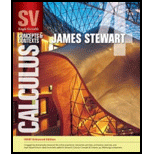
Concept explainers
a.
find solution values correct to two decimal places.
a.
Answer to Problem 24E
Explanation of Solution
Given information:
The equation
Use a graph to show that the equation
Calculation:
Consider the equation
The solutions of the equation
From the below, we see that there are three solutions and it lies between
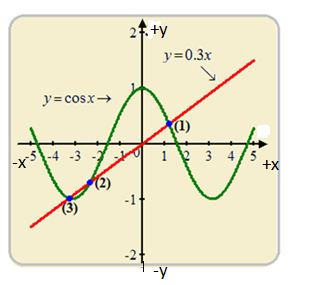
In the above graph, there are three point of intersections between two graphs, so we located each point of intersection by the numbering
Now we have to find the values of point of intersections up to two decimal places.
To find the point of intersections of
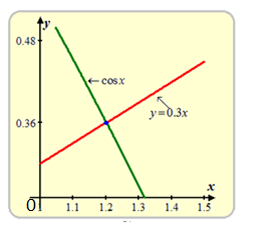
To find the point of intersections of
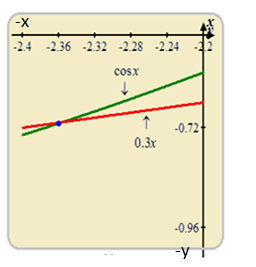
To find the point of intersections of
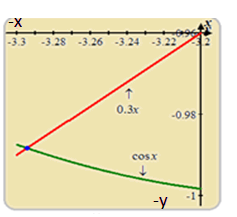
Hence, we conclude that there are two points of intersection because there are two solutions, both within our viewing window.
b.
Find the approximate value of
b.
Answer to Problem 24E
Explanation of Solution
Given information:
the equation
Find an approximate value of
Calculation:
Need to find the approximate value of
The following graphs shows the different values of
The value of
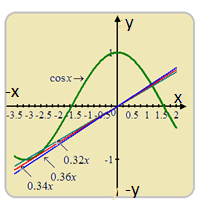
From the above graph, we observe that the value for
The intersecting points has exactly two solutions as shown in the below graph.
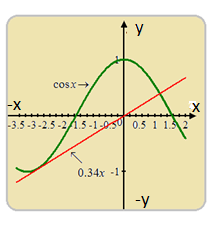
Hence,we conclude the value for
Chapter 1 Solutions
Single Variable Calculus: Concepts and Contexts, Enhanced Edition
 Calculus: Early TranscendentalsCalculusISBN:9781285741550Author:James StewartPublisher:Cengage Learning
Calculus: Early TranscendentalsCalculusISBN:9781285741550Author:James StewartPublisher:Cengage Learning Thomas' Calculus (14th Edition)CalculusISBN:9780134438986Author:Joel R. Hass, Christopher E. Heil, Maurice D. WeirPublisher:PEARSON
Thomas' Calculus (14th Edition)CalculusISBN:9780134438986Author:Joel R. Hass, Christopher E. Heil, Maurice D. WeirPublisher:PEARSON Calculus: Early Transcendentals (3rd Edition)CalculusISBN:9780134763644Author:William L. Briggs, Lyle Cochran, Bernard Gillett, Eric SchulzPublisher:PEARSON
Calculus: Early Transcendentals (3rd Edition)CalculusISBN:9780134763644Author:William L. Briggs, Lyle Cochran, Bernard Gillett, Eric SchulzPublisher:PEARSON Calculus: Early TranscendentalsCalculusISBN:9781319050740Author:Jon Rogawski, Colin Adams, Robert FranzosaPublisher:W. H. Freeman
Calculus: Early TranscendentalsCalculusISBN:9781319050740Author:Jon Rogawski, Colin Adams, Robert FranzosaPublisher:W. H. Freeman
 Calculus: Early Transcendental FunctionsCalculusISBN:9781337552516Author:Ron Larson, Bruce H. EdwardsPublisher:Cengage Learning
Calculus: Early Transcendental FunctionsCalculusISBN:9781337552516Author:Ron Larson, Bruce H. EdwardsPublisher:Cengage Learning





